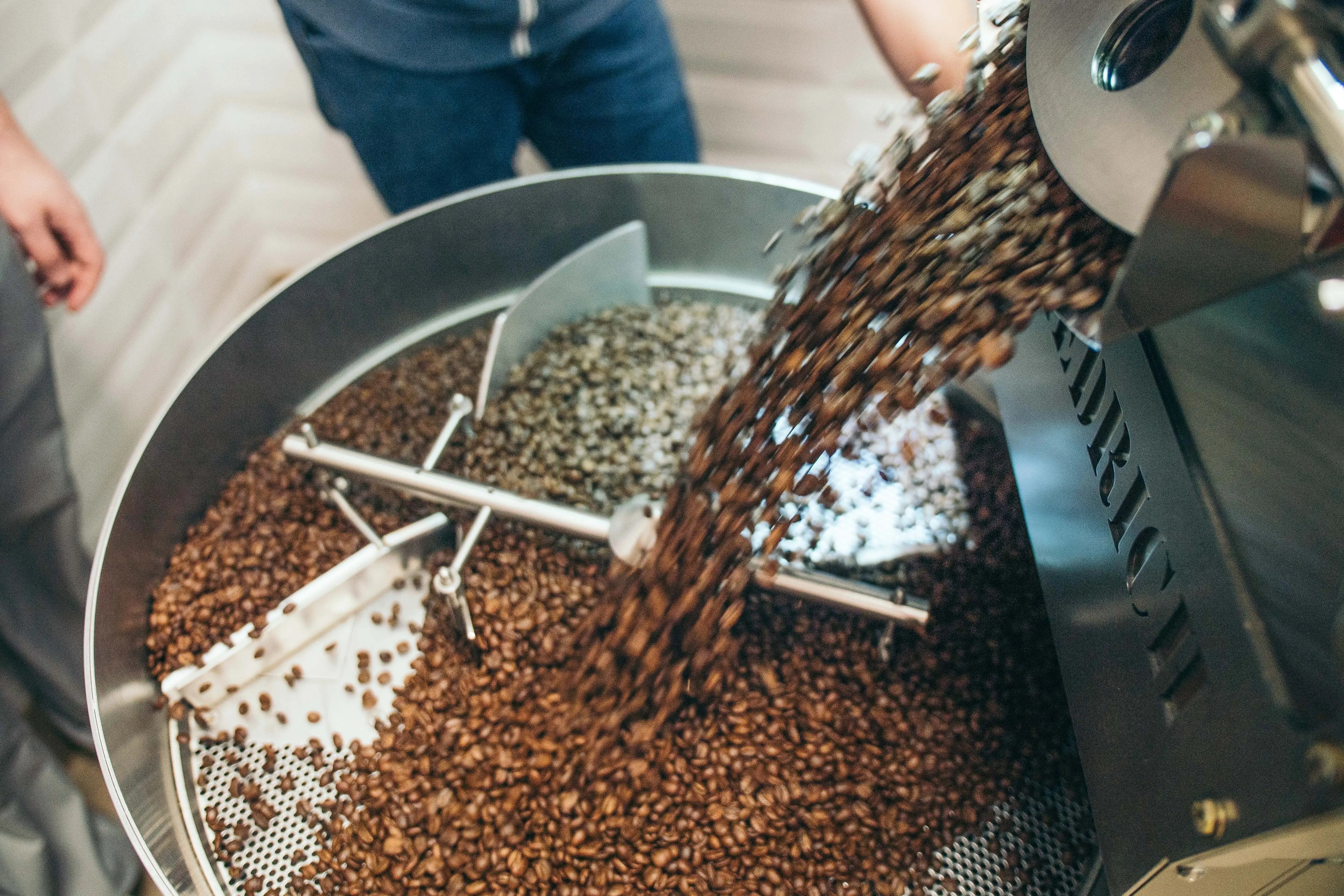Pale, greenish, grassy and musty - that’s green coffee before we roast it. During roasting, green beans absorb heat, lose moisture and turn into that deliciously flavourful dark bean that we use to make coffee.
There are quite a few steps though before we strike coffee perfection - it’s all part of what we have tagged, the #craftingbeautiful process.
So many complex equations determine the end taste of your coffee. Coffee roasting is very much a science as well as an art form. Green beans of the same varietal, from different countries of origin or grown in different environments, are likely to taste quite different even when roasted to the same level.
A coffee roasted only seconds too long can shift from a bright, acidic, fruity cup to something sour and disappointing. In the same way, our chocolatey, nutty Brazilian beans can swing toward burnt and bitter within moments.

Crafting the perfect roast requires working to a recipe that changes with each bean, and eagle eyes are required to keep the batch on track.
The roaster is able to take control of characteristics by following the roasting ‘bell curve’, where sweetness falls between the peaks of acidity and bitterness.
Here, at Beancraft, we also keep in mind the end use of the beans, whether it is mainly going to be used as a long black, a milk-based drink, or as a filter coffee. There is no “best” overall roast recipe; moreover, the beans are roasted for their specific purpose.
What about blends of coffees?
While we could throw all the origins into the roasting machine and press play, we would miss developing the inherent characteristics of each origin.
Some beans, for example, the heirloom varieties, are denser and require a different roast profile to other varietals. Moisture content within each origin will also roast differently. Therefore, in a blend, we would most commonly roast each origin to bring out its best qualities, before post-blending the roasted beans together to create the final blended batch.

The most common way to describe coffee roast levels is by the colour of the roasted beans, ranging from light to dark (or extra dark). Here’s a quick overview:
Light Roasts
They are of course a lighter brown, with no oil evident on the surface of the beans. By roasting high-quality beans lighter, more delicious and exotic flavours can be experienced. Bright, sweet and floral notes will engage the taste buds, making it perfect for filter and pour-over coffees.
Medium
Rich, smooth aromas are formed and a pleasant hint of bitterness is found within the medium roast category. A beautiful flavour experience comes from these dark brown beans with a better balance than the lighter roasts.
Medium-Dark
These roasts have a richer, darker colour with some oil beginning to show on the surface of the beans. Great for espresso: with a heavier body and fuller flavour. There’s an incredible amount of flavour diversity among medium roasts, however. So it’s hard to describe it in a nutshell.

Dark
These coffee beans are a dark brown colour (almost black) and are wrapped in an oily sheen. A dark roast can be quite bitter and the flavours of origin are mostly unrecognisable due to the longer roast time. Slight smokiness. Not our favourite!
Did we miss anything from the above? Which level of roast do you prefer?
____________________________________________________________
We talk about coffee a lot. We’re passionate and a little nerdy, though understand that not everyone understands all of the coffee industry terms & concepts. We want to make sure that we talk about coffee in a way that anyone can understand. After all, we are all at different stages of the coffee journey and that’s OK.
That said, we are working through a blog series that aims to shed light on coffee subjects in an accessible way.
To help us cover topics of your interest, tell us, what is it that you want to know about coffee? From the farm to the roasting process, ask us any questions and we shall deliver our wisdom in the form of short, snappy blog posts that will be fun to follow! Let us know in the comments.

